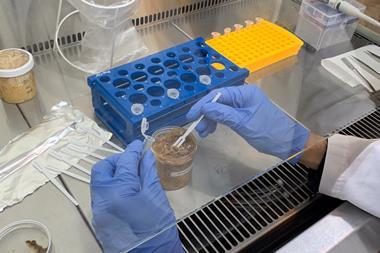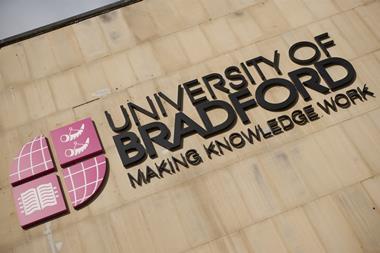A treatment for Alzheimer's disease or schizophrenia is little use if it can't reach its target in the brain
Ananyo Bhattacharya/Philadelphia, US
A treatment for Alzheimer’s disease or schizophrenia is little use if it can’t reach its target in the brain. And, as pharmaceutical firms invest their millions in promising compounds, they are keen to avoid pursuing the dead end of a compound that fails at a crucial hurdle - the blood-brain barrier.
This unusually leak-proof layer of tightly-packed endothelial cells lines the capillaries supplying blood to the brain. It has been the bane of many a drug discovery programme, but chemists are gradually getting the better of it - developing techniques that quickly and reliably identify the compounds that will make it across.
As with all cells, the membrane of these endothelial cells is made up of two layers of phospholipid molecules - with the fatty tails lining up next to each other and the polar phosphate heads on the outside. Many molecules are simply too bulky to squeeze between the hydrocarbon tails of the membrane to enter the brain. But it’s not only the molecule’s size that controls its ability to cross. Different groups are looking at a drug candidate’s surface area, hydrogen bond donors and acceptors and flexibility as part of their efforts to predict whether it will cross into the brain.
Anna Seelig of the University of Basel, Switzerland, who was speaking at the ACS Fall meeting in Philadelphia, US has developed a novel way to discover how effectively a molecule will permeate the barrier. Her team has calculated how molecules position themselves as they prepare to enter the membrane and found that a cross-section through them in that orientation is a good predictor of permeability.1
But getting into the membrane is only half the problem. Proteins in the membranes of endothelial cells can pump your drug back out as fast as it diffuses in. One of the most common transporters - and perhaps one of the most feared in drug discovery - is P-glycoprotein (PGP), which can ruthlessly dump an incredible variety of different drugs back into the bloodstream, preventing them from ever reaching the brain.
It’s a transporter that Lorin Thompson of Bristol-Myers Squibb in Wallingford, Connecticut, has come up against during the firm’s efforts to develop drugs for Alzheimer’s disease. One approach is to find compounds that block an enzyme called BACE1. The enzyme chops up the amyloid precursor protein, fragments of which go on to form the plaques found in the brains of Alzheimer’s patients.
Three inhibitors of the enzyme designed by Thompson and co-workers all stopped plaques from forming in cultured cells but not in the brains of mice. But when the team dosed mice genetically engineered to lack PGP transporters, they found the compounds were able to reach the brain and successfully reduce amyloid plaques.2
’Once you’ve picked up PGP recognition in a chemical series, it’s very difficult to evade it,’ says Stephen Hitchcock, executive director of medicinal chemistry at Amgen in Thousand Oaks, California, who has recently published work on a compound that activates cannabinoid receptor 2 (CB2).3 Such compounds could treat pain and inflammation without triggering marijuana’s mood-altering effects, which are all associated with another cannabinoid receptor - CB1.
But there is still a lot of debate about how best to find out if a drug is a substrate for PGP, and commonly used assays don’t always pick it up. ’It’s very important to characterise your compound early on,’ Hitchcock adds. That way, if your drug lead is not hitting your target thanks to PGP, you can decide whether to cut your losses before the costs spiral.
References
- G Gerebtzoff and A Seelig, J. Chem. Inf. Model. , 2006, 46 , 2638 (DOI: 10.1021/ci0600814)
- J E Meredith et al, J. Pharmacol. Exp. Ther. , 2008, 326 , 502 (DOI: 10.1124/jpet.108.138974)
- Y Cheng et al, J. Med. Chem. , 2008, 51 , 5019 (DOI: 10.1021/jm800463f)






No comments yet